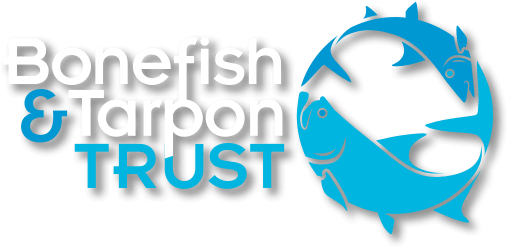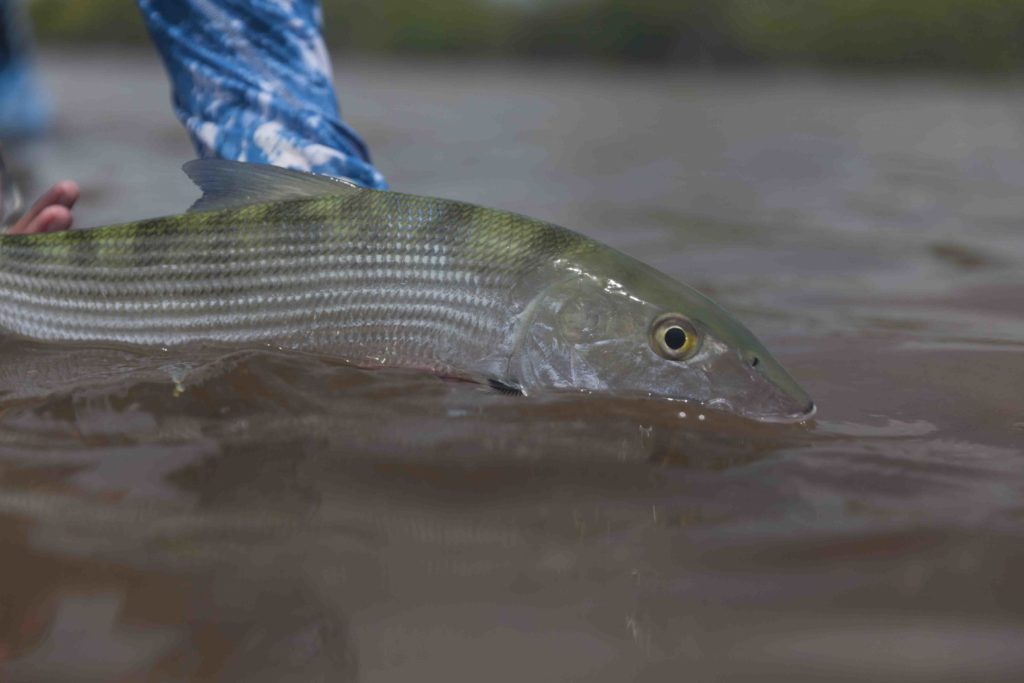Photo: Patrick Williams
Bonefish & Tarpon Trust’s work in Belize and Mexico started out small, but is now growing quickly to help the fishing guides and lodges address threats to the flats fishery. Here is a brief summary of the beginnings.
BELIZE
Bonefish & Tarpon Trust first began conducting research in Belize in 2006, when we used a seine net to search for juvenile bonefish at Turneffe Atoll. This was part of a regional project to figure out the juvenile nursery habitats for bonefish. Although we found juvenile bonefish along Turneffe’s windward beaches, they turned out to be a different species (Albula goreensis) than the species we chase on the flats (Albula vulpes). Since that time, we’ve determined that juvenile Albula vulpes instead use open sandy-muddy bottom in protected bays.
The early work on juveniles soon expanded to a focus on tagging adult bonefish, tarpon, and permit to identify their home ranges and movement patterns. Similar tagging work in the Bahamas has contributed to the creation and expansion of national parks to protect habitats. Over the years, we worked with Belize River Lodge to place satellite tags on numerous tarpon in Central Belize, and to tag bonefish and permit with dart tags. We worked with El Pescador Lodge on these tagging efforts in Northern Belize. And we worked with Garbutt’s Fishing Lodge to tag permit in Southern Belize. We also worked with independent guides scattered throughout the country. The goal of this research is to identify the habitats and locations most important to these species so we can work with Belizeans to prioritize conservation.
The tarpon that were satellite tagged never left Belize. They moved throughout Central Belize, for example, but never left the area. Results for bonefish and permit were similar – most of the tagged fish that were recaptured were caught near the place the fish were originally tagged. This suggests that these fish have small home ranges, so are especially susceptible to habitat loss and degradation.
More recently, we conducted extensive tagging work on bonefish in Northern Belize, and identified home ranges, spawning migrations, and a pre-spawning site. We will share more on this work in a later post.
In 2014, BTT co-hosted a Flats Fishing Symposium in Belize City, which was attended by guides from throughout the country. The goal of the symposium was to find out from the guides their top concerns about the flats fishery. The flats guides identified the top threats to the flats fishery as gillnets, lack of enforcement of existing laws, and habitat loss and degradation. BTT continues to work with the guides and lodges to address these threats. Stay tuned to the BTT blog for information on this topic.
MEXICO
Bonefish & Tarpon Trust first ventured into Mexico’s permit fishery in Ascension Bay in 2011, when we worked with the non-profit conservation group Amigos de Sian Ka’an, the Sian Ka’an Biosphere Reserve, and fishing lodges and fishing guides to focus on permit. This was the initial expansion of the Project Permit tagging program from the Florida Keys. As in the Florida Keys, the goal of the tagging program has been to determine the movement patterns of permit and whether they remain within the protected area of the Sian Ka’an Biosphere Reserve, which encompasses Ascension Bay, or if they move out of the protected area where they might be harvested. Based on reports of fish that have been recaptured, it appears that most permit remain within Ascension Bay, but that some do venture out. For example, a fish tagged in Ascension Bay in 2016 was recently recaptured in Belize. We plan to ramp up the tagging program in Mexico again soon.
We also did some tagging of tarpon in Campeche, on the west coast of the Yucatán Peninsula, beginning in 2012. So far, we haven’t had many recaptures, but the recaptures reported so far suggest the juvenile tarpon don’t stray far from their home creek for the first year or two. Now this work is shifting gears to address issues with gillnetting that may be impacting the tarpon fishery that occurs in a protected area north of Campeche




